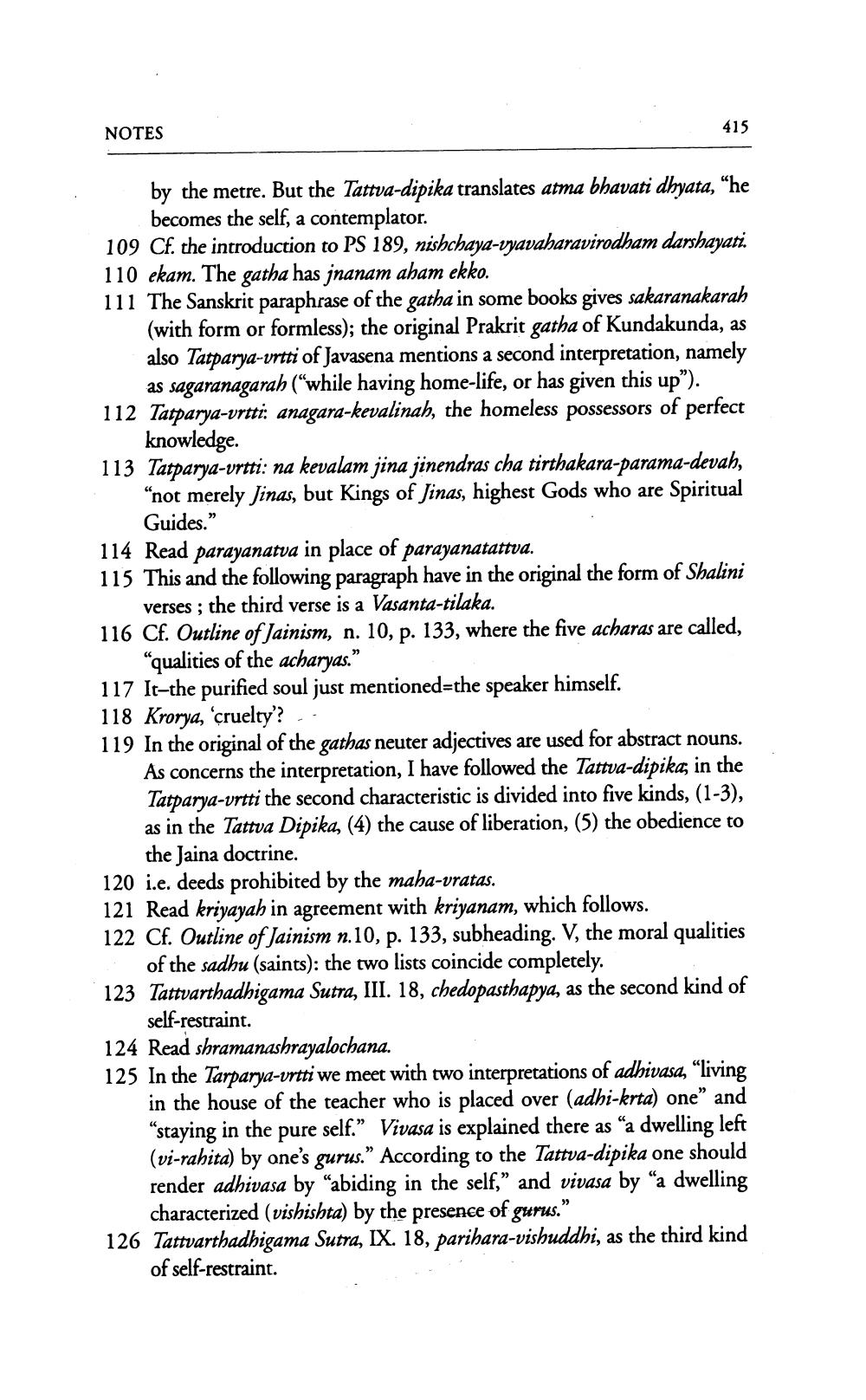________________
NOTES
415
by the metre. But the Tattva-dipika translates atma bhavati dhyata, "he
becomes the self, a contemplator. 109 Cf. the introduction to PS 189, nishchaya-vyavaharavirodham darshayati. 110 ekam. The gatha has jnanam aham ekko. 111 The Sanskrit paraphrase of the gatha in some books gives sakaranakarah
(with form or formless); the original Prakrit gatha of Kundakunda, as also Tatparya-vrtti of Javasena mentions a second interpretation, namely
as sagaranagarah (“while having home-life, or has given this up”). 112 Tatparya-vrtti: anagara-kevalinah, the homeless possessors of perfect
knowledge. 113 Tatparya-vrtti: na kevalam jina jinendras cha tirthakara-parama-devah,
“not merely Jinas, but Kings of Jinas, highest Gods who are Spiritual
Guides." 114 Read parayanatva in place of parayanatattva. 115 This and the following paragraph have in the original the form of Shalini
verses ; the third verse is a Vasanta-tilaka. 116 Cf. Outline of Jainism, n. 10, p. 133, where the five acharas are called,
"qualities of the acharyas." 117 It-the purified soul just mentioned=the speaker himself. 118 Krorya, 'cruelty'? 119 In the original of the gathas neuter adjectives are used for abstract nouns.
As concerns the interpretation, I have followed the Tattva-dipika, in the Tatparya-vrtti the second characteristic is divided into five kinds, (1-3), as in the Tattva Dipika, (4) the cause of liberation, (5) the obedience to
the Jaina doctrine. 120 i.e. deeds prohibited by the maha-vratas. 121 Read kriyayah in agreement with kriyanam, which follows. 122 Cf. Outline of Jainism n.10, p. 133, subheading. V, the moral qualities
of the sadhu (saints): the two lists coincide completely. 123 Tattvarthadhigama Sutra, III. 18, chedopasthapya, as the second kind of
self-restraint. 124 Read shramanashrayalochana. 125 In the Tarparya-vrtti we meet with two interpretations of adhivasa, “living
in the house of the teacher who is placed over (adhi-krta) one” and “staying in the pure self.” Vivasa is explained there as "a dwelling left (vi-rahita) by one's gurus.” According to the Tattva-dipika one should render adhivasa by “abiding in the self,” and vivasa by "a dwelling
characterized (vishishta) by the presence of gurus.” 126 Tattvarthadhigama Sutra, IX. 18, parihara-vishuddhi, as the third kind
of self-restraint.




